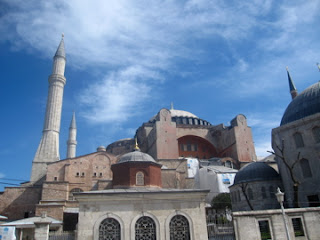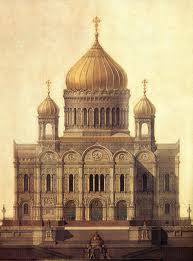 |
| Cook Islands place in the world. North of New Zealand and Australia, south of Hawai'i |
America has Hawai’i; the Kiwis (the name given to residents
of New Zealand) have The Cook Islands, a small chain of islands located
directly to the south of Hawai’i and very, very popular with Kiwi travelers. So,
just why are The Cook Islands so popular with Kiwis/New Zealanders? The main
reason is simple; it is a territory of New Zealand and only a 3 ½ hour flight
from Auckland, New Zealand’s largest city. And since it is a territory, visitors
don’t have to waste time worrying about obtaining a passport and/or visa in
order to gain entry. Furthermore, there is no hassle regarding currency
exchange since the New Zealand dollar and Cook Islands dollar are pegged at a
1:1 exchange rate.
Over the years I had heard and read a lot about The Cook
Islands mainly thanks to my unending fascination with all things Polynesia. It
fascinated me that this island nation was made up of only 15 small islands, but
covered a vast area of 690,000 square miles of ocean.
After years of dreaming of visiting The Cooks, my dream finally became a
reality in 2009 and 2010 when I got the chance to visit the islands of Rarotonga (the nation's main island), Aitutaki (the honeymoon island with crystal clear lagoons), Mauke (a remote rural island) and Mangaia (a small outer island that consists mainly of coral called "makatia).
Having had so much experience living and visiting Hawai’i
the bar for The Cook Islands was set pretty high. How could a small island
chain outdo Hawai’i with its three active volcanoes (one of which has been
erupting non-stop since 1983) and all the lush green cliffs and valleys that
dot the Garden Island of Kaua’i? And, how could The Cooks match the “aloha
spirit” I had become so accustomed to while visiting and living in Hawai’i? To
my surprise I found that not only did The Cook Islands match all my
expectations, but exceeded them. True I thought, there were no erupting
volcanoes with seas of orange lava oozing down the volcano’s slope and there
were no lush green cliffs, but still there was something about this place which
really touched me deep inside.

One part of The Cook Islands that really struck me was how
laid back, rural and real the islands were compared to the insanity of Hawai’i.
In Hawai’i it feels like the entire state is overrun with what one of my tour
guides in The Cook Islands described as, “plastic resorts”, otherwise known as
over the top all in one mega resorts that seem to suddenly just erupt out of
the ground every couple months. Now of course Rarotonga (the main island of The Cook Islands) has its fair share of a
few plastic like five star resorts, which will set you back a few years pay,
but they just are on a much, much smaller and on a less grandiose scale than in
Hawai’i!
Besides the lack of giant “plastic” resorts, I found the
warmth and sincerity of the locals to be a welcome respite from the rat race
that is Honolulu and even some of the outer islands. Everywhere I went I was
warmly greeted with the standard greeting “kia orana” meaning “hello” or
“welcome”. However, this is not to say Hawai’i does not have its fair share of
kind and warm people. After all, Hawai’i is home to “The Aloha Spirit”, a source of constant debate amongst Islanders over whether it even exists, or whether it has disappeared like a lot of old relics of Hawai'i. Others say the spirit is still and always will be alive and well?! I tend to be rather undecided. I sometimes can see it and other times, like when I am cut off by some person on the freeway, I tend to think it is likely extinct.
Whether it is alive and well or extinct one thing is for sure, it still exists in some form in The
Cook Islands, where it is the local way!l!!!
 |
| Air New Zealand's once a week flight from LA @ Rarotonga Airport |
The moment you step off the jet and onto the tarmac in
Rarotonga you suddenly feel a sense of calm and peace as opposed to being tense
and even tired once you depart LAX (Los Angeles Airport) for the 14-hour haul
down the Pacific Ocean. Even when I land in Honolulu after a 6-7 hour flight
from the Mainland I never feel quite as relaxed as I do when I have arrived in
Rarotonga.
I've been to more than 40 nations in my life and met a lot of different people along the way,, many of whom I will never forget… But the
person who stands out the most in my mind is a man of Cook Maori descent (the
indigenous people of the islands) who goes by the simple name of Pa. Pa is no
ordinary bloke, but likely the most well known person in all The Cook Islands.
Mention his name ANYWHERE from the small island of Mangaia to the bars of
Avarua, Rarotonga and you are sure to get a smile and a story to go along with
it.
Before I even departed to Rarotonga all my Kiwi friends insisted
that if I were to there for ANY amount of time that I MUST, MUST sign up for
the cross-island trek with Pa. Since I loved to get out in nature and hike, it
was a no brainer. Naturally the moment I arrived on “Raro” I contacted “Pa’s
Treks” and arranged for a trek the following day.
The next day came and I was anxious to meet the myth, the legend and the star of The Cook Islands, Pa. The
instant I met Pa I knew my Kiwi friends and all the people on Rarotonga were
right, the man was quite the character! Instead of wearing hiking shoes for the
3+ hour journey he showed up in nothing more than………….bare feet.
 |
| The man, the legend, Pa! |
Surely I thought he must have a pair of shoes he kept at the
trailhead, no way was he crazy enough to hike up 400 meters to the top of the
“Rarotonga Needle” in bare feet?!?!
Not
only was he barefoot, but he also was not wearing any kind of shirt. I suppose
that unlike me who burns easily (even after a few minutes in the sun I tend to
resemble a well-done lobster) he probably was pretty immune to the sun’s
effects. But, the shoes and lack of shirt were not what really caught my eye.
The feature on Pa that most stood out to me was his looooooooooooong dirty
blonde dread locks, which would put Bob Marley to shame!

 We continued to tramp (the word Kiwis
use for hiking) through the rainforest until darkness started to give way to
light. This could only mean one thing; we were coming to the end of our journey
across Rarotonga. Once we reached the
end of the path there was a beautiful waterfall and billabong (Australian for
water hole and also the name of a famous worldwide surfing company) just
waiting for us! I decided to take a pass since I still had haunting memories of
an infamous time when I was 8 years old and swam in such a pool on Maui,
subsequently ending up with leeches all over my body. My poor mother had to
pick them off one by one! Not a good memory and not something I really wanted
to repeat.
We continued to tramp (the word Kiwis
use for hiking) through the rainforest until darkness started to give way to
light. This could only mean one thing; we were coming to the end of our journey
across Rarotonga. Once we reached the
end of the path there was a beautiful waterfall and billabong (Australian for
water hole and also the name of a famous worldwide surfing company) just
waiting for us! I decided to take a pass since I still had haunting memories of
an infamous time when I was 8 years old and swam in such a pool on Maui,
subsequently ending up with leeches all over my body. My poor mother had to
pick them off one by one! Not a good memory and not something I really wanted
to repeat.  We continued to tramp (the word Kiwis
use for hiking) through the rainforest until darkness started to give way to
light. This could only mean one thing; we were coming to the end of our journey
across Rarotonga. Once we reached the
end of the path there was a beautiful waterfall and billabong (Australian for
water hole and also the name of a famous worldwide surfing company) just
waiting for us! I decided to take a pass since I still had haunting memories of
an infamous time when I was 8 years old and swam in such a pool on Maui,
subsequently ending up with leeches all over my body. My poor mother had to
pick them off one by one! Not a good memory and not something I really wanted
to repeat.
We continued to tramp (the word Kiwis
use for hiking) through the rainforest until darkness started to give way to
light. This could only mean one thing; we were coming to the end of our journey
across Rarotonga. Once we reached the
end of the path there was a beautiful waterfall and billabong (Australian for
water hole and also the name of a famous worldwide surfing company) just
waiting for us! I decided to take a pass since I still had haunting memories of
an infamous time when I was 8 years old and swam in such a pool on Maui,
subsequently ending up with leeches all over my body. My poor mother had to
pick them off one by one! Not a good memory and not something I really wanted
to repeat. 














